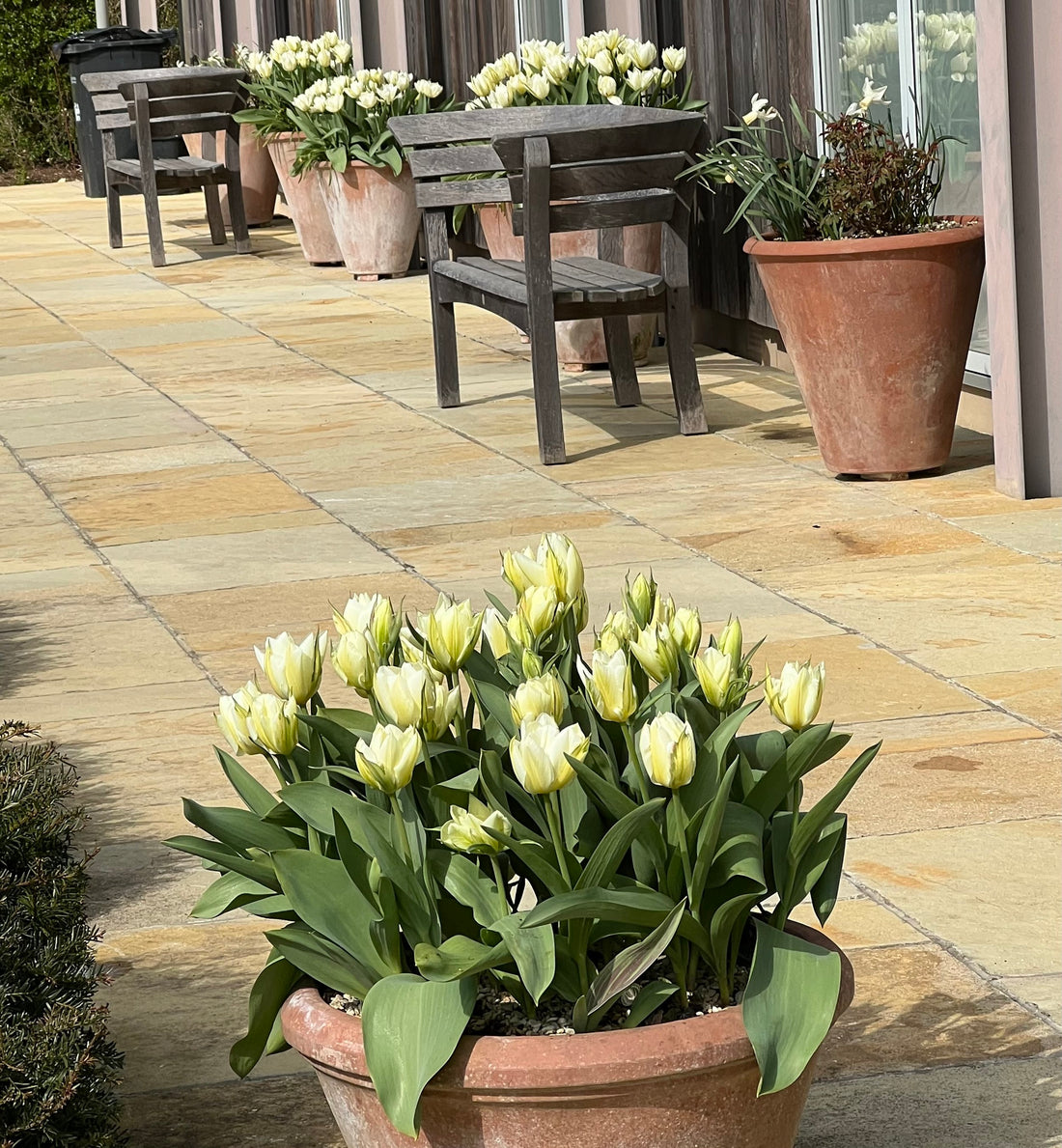
Planting containers
SEO SpaceThe moment the sun comes out …
…. and I can feel its warmth on my face, I start potting up tubers and sowing seeds for my summer borders and containers. Of course, just as has happened this year, we get a sudden cold snap, the magnolia blossoms brown and whirl from the trees and I am left with leggy seedlings that can’t yet go out into an unheated cold frame.
I have decided to restrain my over-enthusiasm for a couple of weeks and hold back the rest of my seed sowing – later-sown seeds will quickly catch up in warm weather and the plants will be stockier and stronger. The break that has given me another chance to plan my pots for the summer.

Tulip ‘Exotic Emperor’ in pots
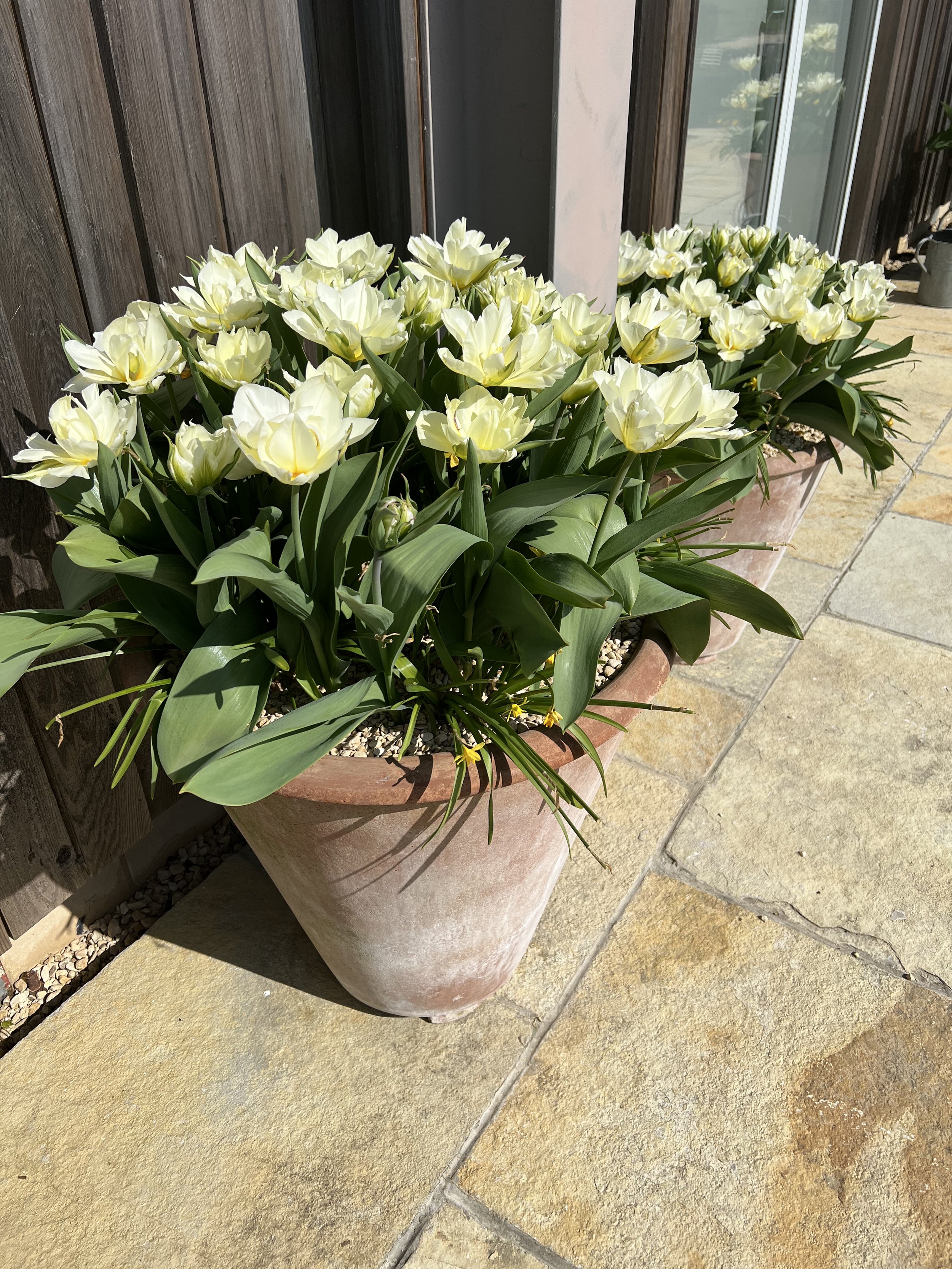
Exotic Emperor holds very well, even in the recent high winds
My spring choice for the pots along the front of the house is a tulip, ‘Exotic Emperor’, which has been in full flower now for two weeks and which has delighted me. It opens early in the spring just when you’re eagerly awaiting the first spring flowers. With its semi-double form, sweet scent and very showy green and cream blooms, it is an eye-catcher. I tend to use my pot tulips as annuals (I dry them out in the shed over the summer and replant them in the garden in the autumn where about half of them come back the following year). I plant more thickly than recommended for that early display (as long as the bulbs don’t touch, you can put in as many as you like). This year I had enough to plant up a container in the vegetable garden purely for cutting – both as a cut flower and in pots it has performed well.
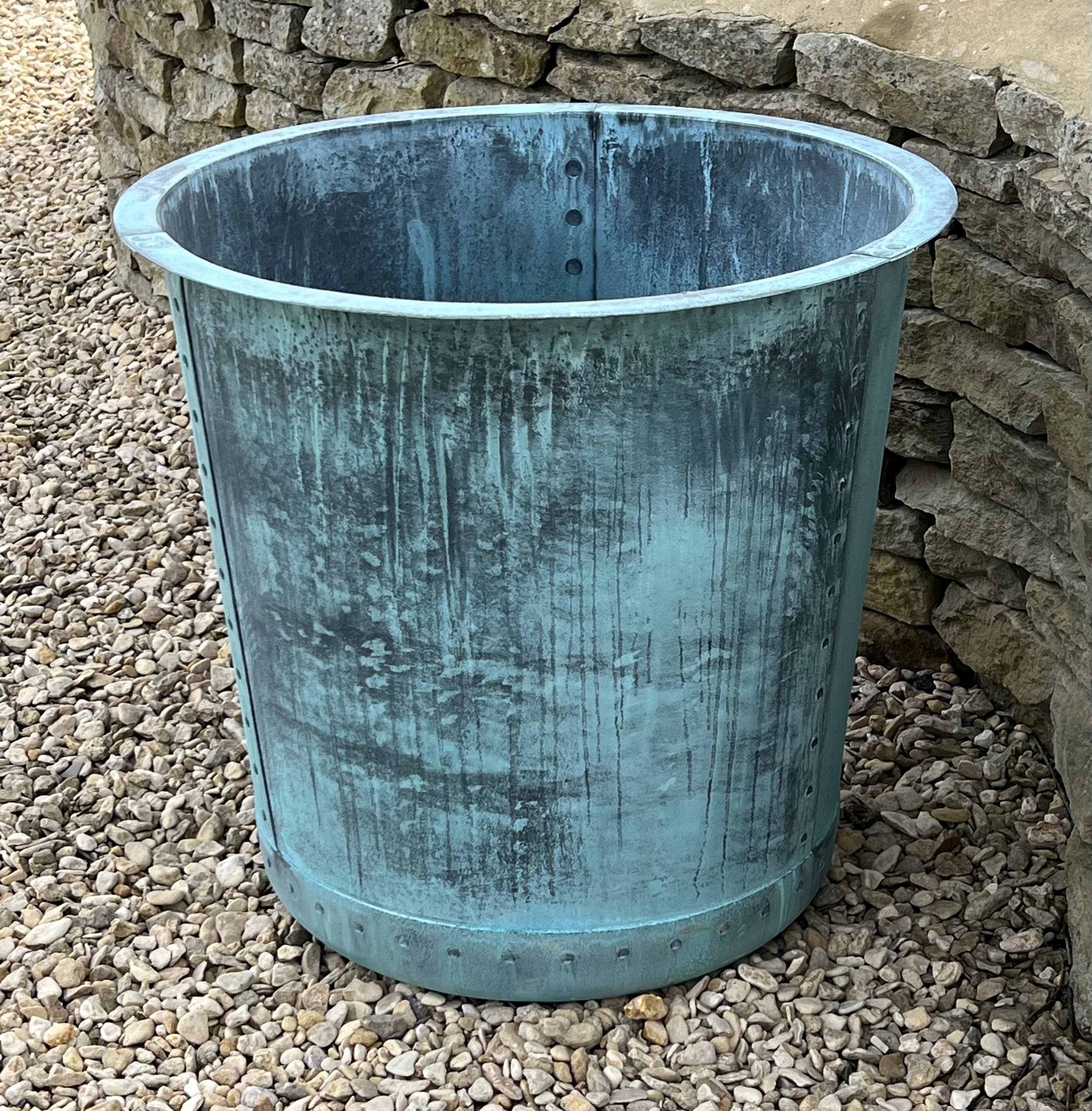
Copper container from Architectural Heritage

Massed spring bulbs show to great effect in a container at Asthall Manor

My own containers with planted with cosmos flowered all season
Beautiful copper containers
Last autumn we bought two beautiful copper containers from Architectural Heritage and I’m looking forward to planting them up. If you don’t have room for large containers, two or three plants of the same variety planted in a container will make a big impact and give a wonderful show all summer: cosmos; gaura; salvias, Euphorbia ‘Diamond Frost’ and Hydrangea ‘Little Lime’ all flower profusely over a long season and set off the mellow terracotta of many of my containers. Quirky containers, too, can look wonderful – small pots in a plant stand are a cheerful and cost-effective way to welcome spring. Accidental effects, like placing these bright hyacinths next to a euphorbia can enhance a seasonal display.
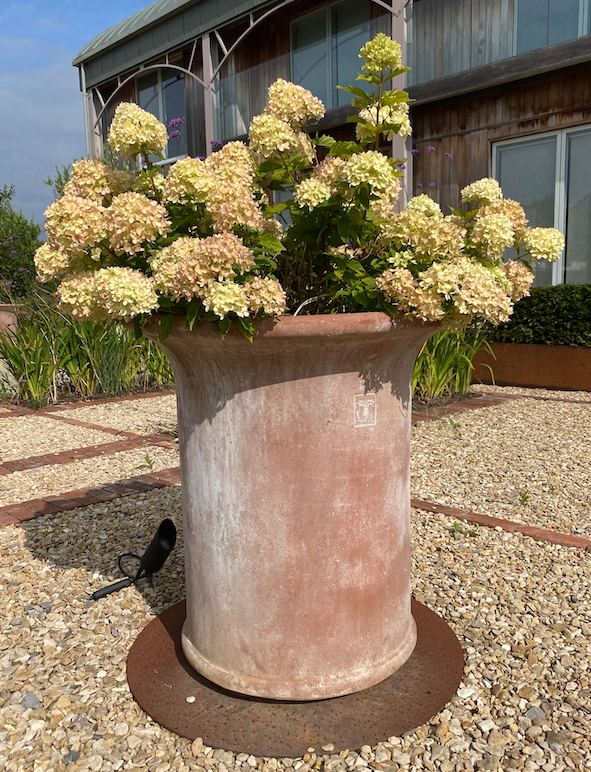
Hydrangea ‘Little Lime’ is a permanent planting
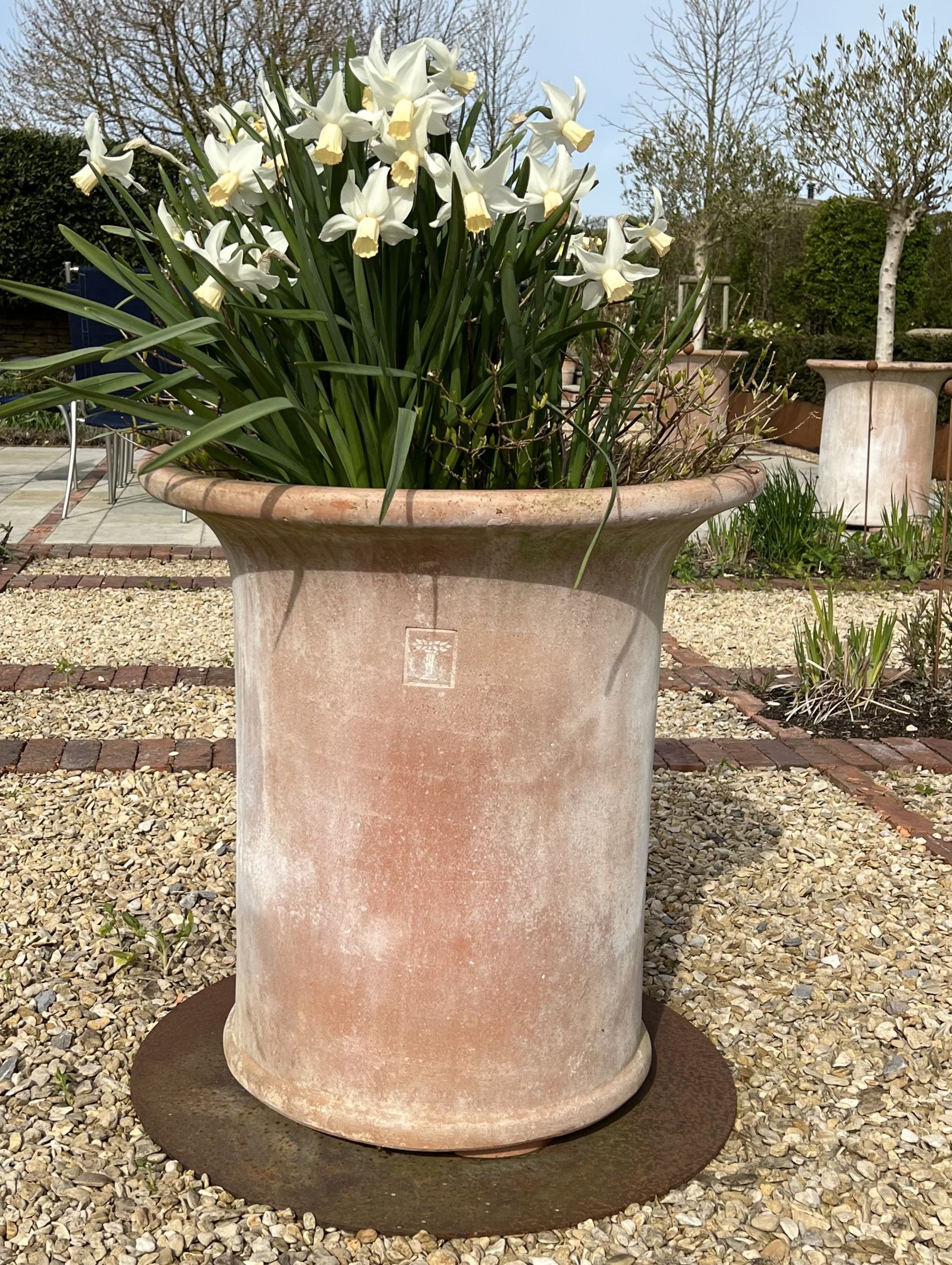
‘Little Lime’ is underplanted with narcissus ‘Cotinga’ for spring colour

A pansy planter shows to great effect in the sunshine at The Generous Gardener
This year I shall use four or five varieties in my large, copper pots.
Sarah Raven has a most useful formula for planting large containers: ‘pillars’ – the large plants that give the pot height; ‘thrillers’ – the bright beauties that attract the eye; ‘fillers’ – the plants used to create mass in the planting; ‘spillers’ – the tumblers that break up the line of the pot and tumble over the edge.
Last summer’s containers at Kiftsgate were a masterclass in just how to plant up a large container (I would always go for the largest you can fit into your garden, rather than a number of smaller ones). The whole planting drew the gaze and then the individual plants invited the eye to roam from one level to the next.
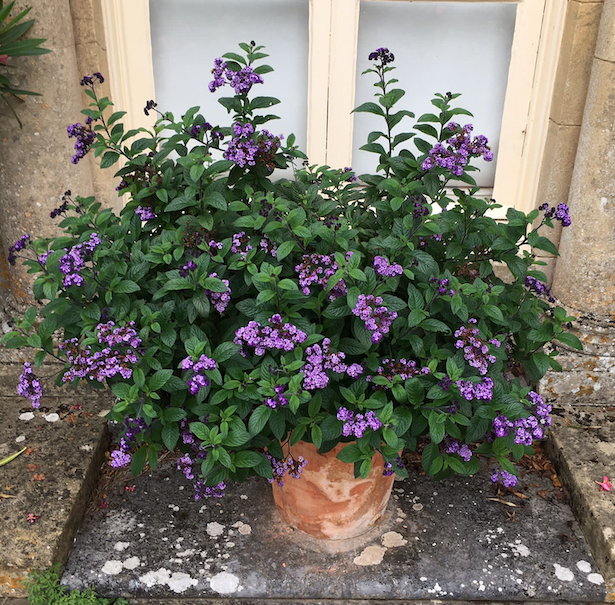
Heliotrope is a perfect match for a terracotta container at Kiftsgate

A masterclass in container planting at Kiftsgate

An ivy leafed pelargonium spills over the rim of a container at Kiftsgate
Plants that I am considering using this year:
Pillars:
-
Why not think about providing height to your container by putting a small obelisk in the middle or towards the back and planting a patio clematis, such as the ‘Boulevard’ series to twine up it and make the centre point of a more permanent planting?
-
Melianthus major, the honey bush, 1.5-2.0 meters, is now sold as an evergreen shrub, although I doubt if it would survive a cold winter here in Gloucestershire. It has handsome, glaucous, pinnate leaves and provides a wonderful backdrop for almost any range of colours
-
Aloysia citronodora, lemon verbena, can grow to over 1.5m but is not generally hardy in this country (although I know one in Cornwall, established over many years, that grows in a sunny courtyard to 2.5m every summer), Its narrow, scented leaves are an attractive backdrop for other plants and it produces small, open panicles of white or mauve flowers. The growing tips make a wonderful lemongrass-scented tisane
-
Salvia: ‘Armistad’, a deep purple; ‘Black and Blue’ indigo flowers with almost black bracts and ‘Salmia Dark Purple’, burgundy with dark coloured leaves are reliable plants for containers
Thrillers:
-
Dahlias: almost any of the more compact dahlias can be used in containers. I am using ‘Bright Eyes’ a single flower with pinky-purple petals, yellow at the base and with a yellow eye on dark stems; ‘David Howard’, a decorative dahlia with orange flowers above lovely, glossy dark foliage – flowers freely; ‘Geri Scott’ a semi-cactus dahlia with bright cerise blooms
-
Rudbeckia: many of the smaller rudbeckias such as ‘Cherokee Sunset’ will give a bright focal point to any container
-
Fuchsia: almost any of the upright fuchsias will thrive in a pot: ‘Eruptions’, ‘Celia Smedley’, ‘Rapunzel’ and ‘Thamar’ are only of a few of the varieties that will give colour and a long flowering season in containers
Fillers:
-
Verbena: any of the low-growing, bushy verbenas such as ‘Homestead Purple’, ‘Showboat’ or ‘Endurascape White’ will give a long display in containers
-
Artemesia: the smaller varieties of artemesia with their finely divided silver foliage provide a beautiful foil for almost any colour
-
Coleus: There are so many varieties in every colour from green to flame red that there is one for every colour scheme
-
Heliotrope: I am very fond of heliotrope with its scented heads of tiny flowers which range from white to deep purple held above broad, dark leaves - although do check their toxicity for pets
Spillers:
-
Helichrysum 'Silver Mist': a trailing, woolly, silver-leaved foliage plant, ‘Silver Mist’ makes a beautiful, branching foil plant for mixed containers or baskets
-
Training pelargoniums: these pretty, plants with their ivy-shaped leaves and delicate flowers have long been associated with the window boxes of Swiss chalets. They come in a wide variety of colours from white to burgundy
The possibilities are endless. I have mentioned only a few of my tried and tested favourites. Just remember to keep your containers well fed and watered as the summer goes on – to put on the display we ask of them they need regular feeding with a general purpose liquid feed, avoiding one heavy in nitrogen, from May to September.
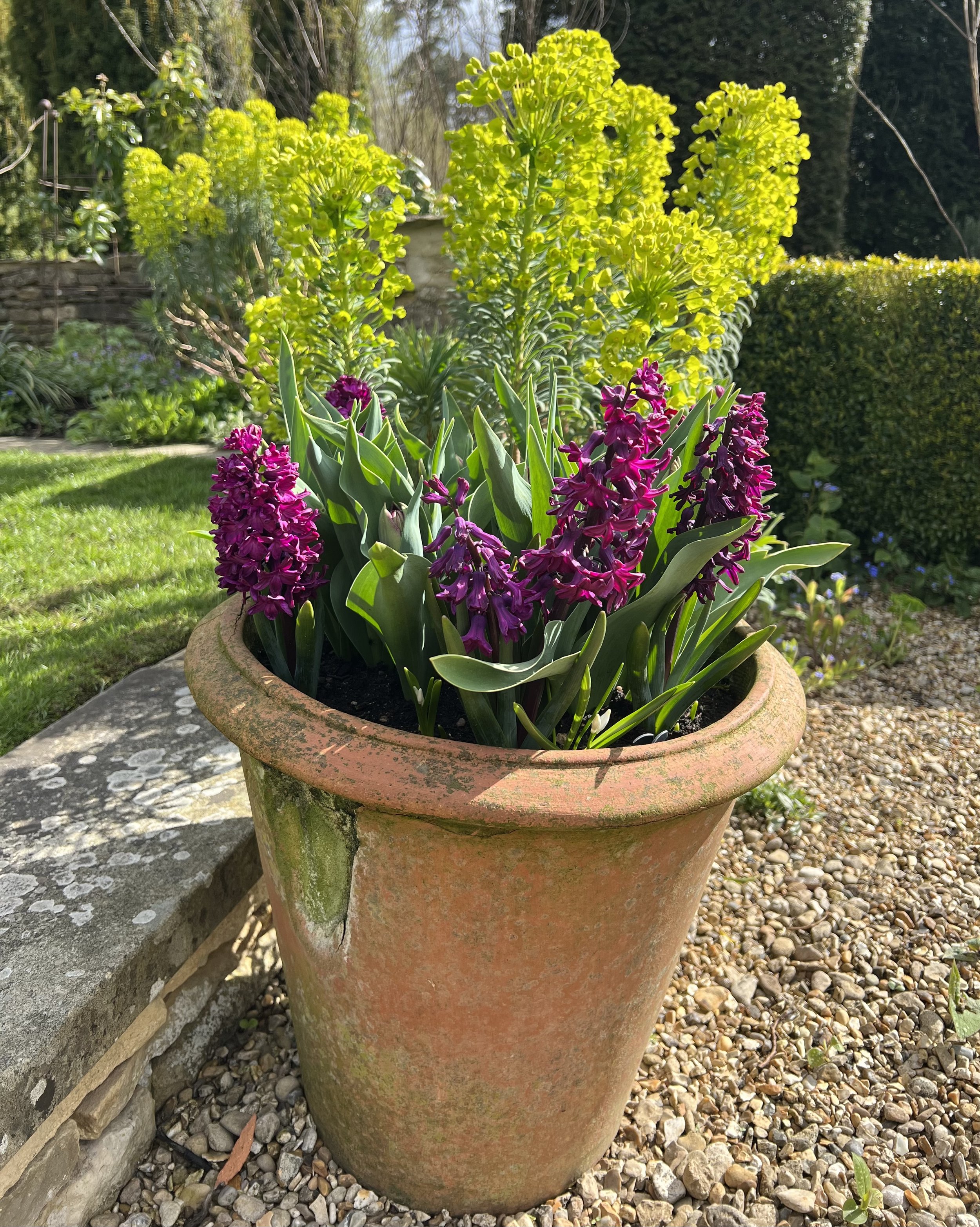
A happy accident of colour combinations

Salvia ‘Armistad’ with its bold, purple flowers is a must for any container

Dahlia ‘David Howard’ is a medium height dahlia which flowers profusely over dark foliage
